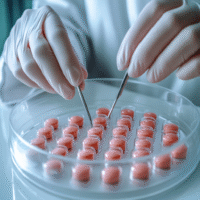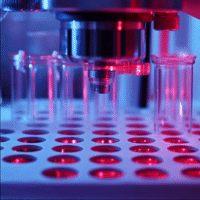Understanding the Study Results
This study looked at how two different treatments, calcium hydroxide and simvastatin, affect inflammation and pain in teeth with a condition called symptomatic apical periodontitis. This condition occurs when the tissue around the tooth root becomes inflamed and painful.
What Worked?
- Simvastatin was found to lower levels of two important markers of inflammation (IL-6 and MMP-9) more effectively than calcium hydroxide.
- Patients treated with simvastatin reported less pain compared to those treated with calcium hydroxide.
What Didn’t Work?
- There was no significant difference in the levels of IL-10 between the two treatments.
How Does This Help Patients and Clinics?
- Using simvastatin can lead to better pain management and reduced inflammation for patients with symptomatic apical periodontitis.
- Clinics can improve treatment protocols, potentially leading to faster recovery and higher patient satisfaction.
Real-World Opportunities
- Hospitals and dental clinics can start using simvastatin as a standard treatment for symptomatic apical periodontitis.
- Training staff on the benefits and application of simvastatin can enhance patient care.
Measurable Outcomes
- Track pain levels using a simple scale before and after treatment.
- Monitor inflammation markers in patients to see the effectiveness of the treatment.
AI Tools
- Consider using AI tools for patient management systems that can help track treatment outcomes and pain levels efficiently.
Step-by-Step Plan for Clinics
- Start by training dental staff on the use of simvastatin for treating symptomatic apical periodontitis.
- Begin a pilot program with a small group of patients to assess the effectiveness of simvastatin.
- Collect data on pain levels and inflammation markers to evaluate the treatment’s success.
- Gradually expand the program based on initial results and feedback from patients.
Link to Research
For more detailed information, you can read the full study here: Study on Simvastatin and Calcium Hydroxide in Dental Treatment.
























